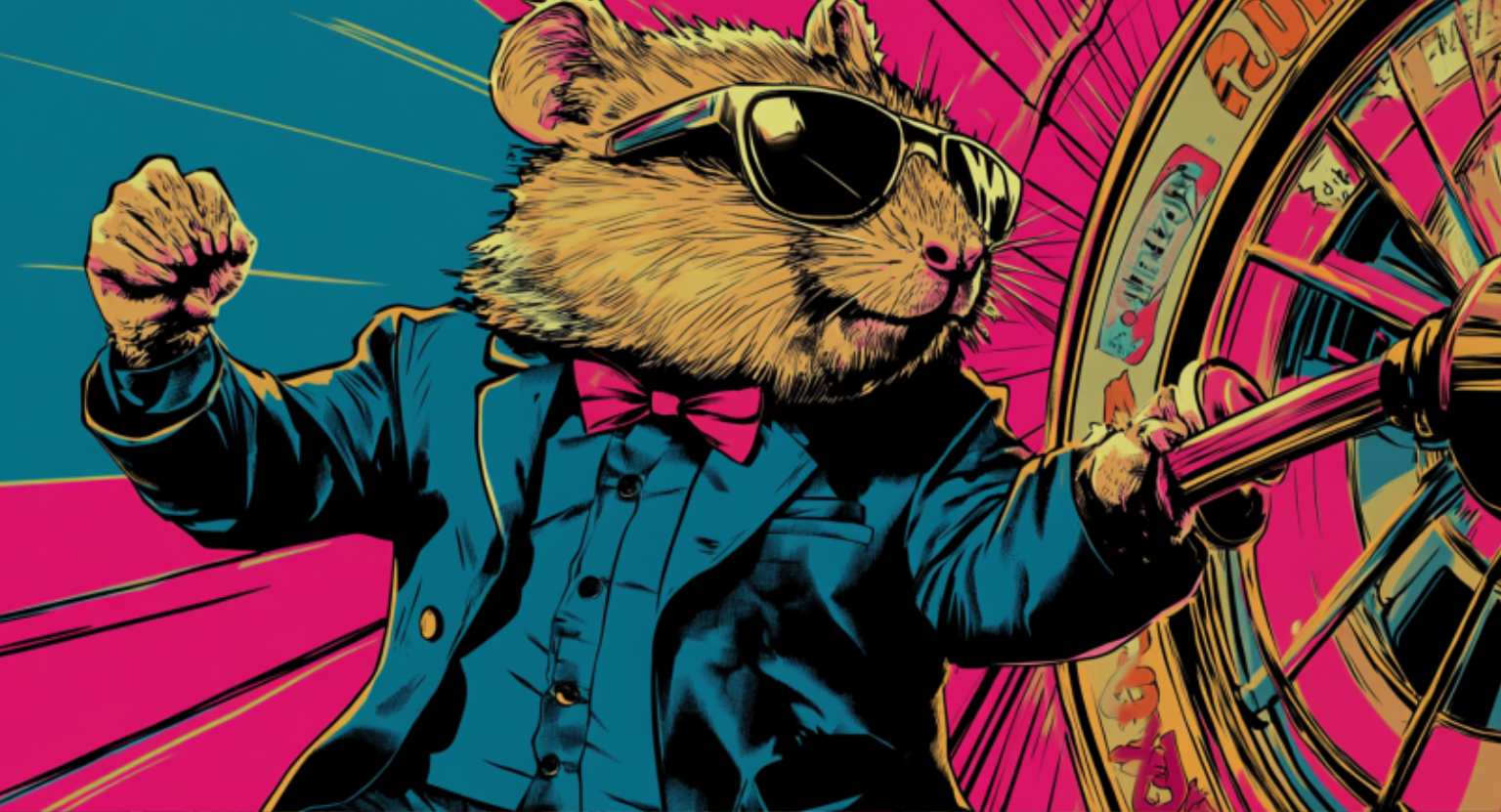What’s the Most Important Thing to Know About Starting a Side Hustle?
A side hustle will consume your time and energy—there’s no way around it. This isn’t a “get rich quick” scheme, it’s a part-time job that could take 10-20 hours per week. If you don’t already have a clear, focused niche and the hustle mentality, you’ll quickly find yourself burnt out. Don’t get fooled by the idea that it’s easy—it’s a grind.
Answer in One Sentence:
A side hustle is a serious time commitment and won’t magically turn into money unless you can find a way to stand out in an oversaturated market.
Expanded Version:
There’s a lot of hype about side hustles, especially in the digital age, but let’s be clear: side hustles are hard work. You’re going to need a unique angle (a niche or solution to a specific problem) and a steady work ethic to make it work. Otherwise, you’re just another voice in an already loud and overcrowded market. You will have to outwork your competition and focus on providing real value to a specific audience.
Also, make sure that your side hustle doesn’t replace your main job’s income too soon—until your hustle can pay your bills, don’t quit your day job. Understand that the balance between the two requires you to master time management, be self-disciplined, and stay organized.
Step-by-Step Breakdown: How to Get Your Side Hustle Off the Ground
1. Find a Real Problem to Solve (Niche Is Key)
- Pick a niche that interests you but also has demand. Everyone has heard of ‘make money online’ or ‘start a blog,’ but those are overcrowded. Instead, look for something specific that solves a problem for a clear group of people. For example, instead of “fitness coaching,” you could niche down to “fitness coaching for new moms.”
Tip for the U.S.: Americans are looking for high-impact, time-saving solutions, especially in fitness, health, and business advice.
Tip for Europe: There’s a growing interest in eco-friendly or sustainable side hustles, such as sustainable fashion or zero-waste products.
Tip for Asia: Look for opportunities that tap into emerging markets—technology consulting for local businesses in Southeast Asia or even teaching English to Chinese students is a popular side hustle.
2. Build a Simple Offer That Solves the Problem
- Your side hustle doesn’t need to be complicated. Start simple. Offer a service or product that’s easily digestible. If you’re providing a service like coaching, digital marketing, or consulting, define exactly what you’ll do for your client. If you’re selling a product, ensure it’s simple and scalable.
Tip for the U.S.: The demand for online education is huge—if you can teach, create an online course. Platforms like Udemy or Teachable make it easy.
Tip for Europe: Many European countries have a side hustle tax or “extra income” guidelines, so be sure you know the rules to avoid surprise taxes later.
Tip for Asia: In some Asian markets, cultural expectations might influence your side hustle, especially around online selling or professional services. Make sure you understand the social landscape.
3. Launch Without Perfection—Just Start
- Don’t wait for everything to be “perfect.” The first version of your side hustle will not be great. Get something out there and iterate. Set up a simple landing page, social media account, or even an email list to start building your audience while you continue refining the offer.
Tip for the U.S.: People in the U.S. are very outcome-driven and often seek instant gratification. Make sure your offer has clear, tangible results.
Tip for Europe: Europeans appreciate professionalism, but they also expect a bit more of a “personal touch”—so be authentic with your brand and message.
Tip for Asia: Build trust early—especially if you’re selling in markets like Japan or South Korea, where personal reputation and word-of-mouth can make or break your hustle.
4. Start Marketing Right Away
- Marketing is your oxygen. Don’t wait to “get it perfect.” In fact, use platforms like Instagram, LinkedIn, and even Facebook to spread the word as you refine your offering. Leverage word of mouth, online communities, and freemium content (like guides, webinars, etc.) to build an audience. The more value you provide upfront, the faster you’ll grow.
Tip for the U.S.: The American audience is responsive to influencer marketing—team up with micro-influencers to amplify your reach.
Tip for Europe: European markets are diverse. Focus your marketing in specific countries or regions where you have the most relevance. For example, tech-related side hustles thrive in Germany, while more artistic endeavors may do better in France.
Tip for Asia: Influencers are king in Asia, so collaborating with local influencers on TikTok or Instagram could help you gain traction faster.
5. Keep Costs Low (The Lean Model)
- Keep initial costs minimal—don’t blow cash on ads, fancy websites, or high-end tools unless you’re seeing a return. In the beginning, your focus should be on time, not money. Free tools like Canva, Mailchimp, and Wix can get you far.
Tip for the U.S.: The U.S. startup ecosystem often emphasizes scaling quickly, so be cautious not to get caught in the “growth trap.” Grow at a sustainable pace.
Tip for Europe: Look for local grants or small-business incentives available through European government programs that can help offset some startup costs.
Tip for Asia: Many Asian countries have government-backed incubators and platforms for entrepreneurs, which might be worth investigating to reduce costs.
6. Focus on Systems, Not Just Hustle
- Successful side hustles scale through systems—automate what you can, from social media posting to invoicing to customer outreach. Use tools like Zapier and Trello to keep track of projects. This will keep your sanity intact as you balance it with your regular job.
Tip for the U.S.: American side hustlers often rely on tech automation to streamline their business. Check out tools like Shopify, Stripe, and Google Analytics.
Tip for Europe: Europeans appreciate simplicity. Don’t over-complicate your workflows with too many tools; focus on what works.
Tip for Asia: Systems work well in Asia, but ensure they cater to the local culture (for example, Japanese customers might prefer more personalized interactions even with automated tools).
The Bottom Line: Is a Side Hustle for You?
- Time is the most valuable asset in your side hustle. Don’t waste it on “shiny object” syndrome. Stick to a focused niche, deliver value, and stay consistent.
- Your side hustle should never be perfect from day one. Get something out there and tweak it as you learn from real-world feedback.
- If you’re starting a side hustle to eventually quit your job, don’t. Keep that income stream from your day job until your hustle can match or exceed it—and even then, be sure you’re still building a sustainable foundation.
- Don’t just hustle—build a real business. Side hustles that scale focus on systems and have clear, measurable value for a specific target audience.
FAQs for Starting a Side Hustle
1. Can I start a side hustle with no money?
Yes, absolutely. Many side hustles, such as freelancing, consulting, teaching, and coaching, require little to no upfront investment. You can use free tools like social media, Google Docs, and Canva to create content and promote your services. The key is to leverage the skills you already have.
2. What side hustles are best for beginners?
Some of the easiest side hustles to get into include freelance writing, graphic design, tutoring, dropshipping, and digital marketing. These require low or no capital to start and allow you to leverage existing skills or learn new ones quickly.
3. How do I choose the right side hustle for me?
Pick something that matches your skills and interests. If you’re a great writer, start a blog or freelance writing business. If you’re good at social media, try social media management. Think about your long-term goals—do you want to scale this into a business or just make extra cash?
4. How much time should I invest in my side hustle?
Expect to spend 10-20 hours per week in the early stages, especially if you have a full-time job. Be realistic about your available time. If you’re only putting in a couple of hours a week, don’t expect rapid growth. Prioritize tasks that will help you build momentum.
5. How do I balance a full-time job and a side hustle?
Time management is crucial. Set clear boundaries for when you’re working on your side hustle versus your job. Block off time in the evenings or weekends, and use tools like Trello or Google Calendar to organize your tasks and set deadlines. Communicate openly with your employer if you’re feeling overwhelmed.
6. How do I make money from a side hustle?
Start by offering a product or service that solves a specific problem. Get your first few customers through friends, family, or social media, then expand by creating a sales funnel to guide prospects to a purchase. Focus on providing value and getting real-world feedback to refine your offering.
7. Do I need a website for my side hustle?
Not at first, but having a basic website or landing page can help legitimize your hustle. You can use platforms like Wix or Squarespace to create a simple site that showcases your offerings. You can also use social media to promote your hustle initially until your website is ready.
8. How do I market my side hustle on a budget?
Use social media platforms (Instagram, TikTok, LinkedIn) to promote your side hustle without spending money. Join online communities or Facebook groups relevant to your niche. Create value-added content like blogs, podcasts, or videos to attract organic traffic. Leverage word-of-mouth and ask happy customers for referrals.
9. How do I price my side hustle services?
Start by looking at competitors in your niche and see what they charge. Initially, you may need to offer competitive pricing to gain clients, but make sure you’re still covering your costs. As you gain experience, you can start raising your rates. Use tiered pricing for different levels of service to cater to various budgets.
10. How do I stay motivated with a side hustle?
Set clear, measurable goals for your side hustle and track your progress. Break larger goals down into small, manageable tasks. Celebrate small wins to keep momentum going. It also helps to remind yourself why you’re starting the side hustle, whether it’s for extra cash, flexibility, or long-term freedom.
11. How do I know if my side hustle is successful?
Track key performance indicators (KPIs) such as revenue, customer acquisition costs, and customer retention rates. If you’re consistently making sales, gaining followers or clients, and achieving the goals you’ve set, you’re on the right path. Adjust your strategy based on what’s working and what’s not.
12. How soon will I start making money?
It can take a few weeks to months before you start seeing consistent income. Most side hustles require time to build an audience and refine your offering. Keep your expectations realistic and stay consistent with your efforts.
13. How do I find clients or customers?
Start by networking with people you know—friends, family, and colleagues can often be your first clients. Use social media platforms to showcase your work, create free content, and build a community. Also, consider reaching out to potential customers directly through cold emailing or LinkedIn networking.
14. Do I need a business license or tax ID for a side hustle?
This depends on your country and the nature of your hustle. In the U.S., if you make over a certain threshold (usually $400+ per year), you’ll need to report the income to the IRS. In some European countries, you might need a freelancer’s license or VAT number for tax purposes. Always check local regulations to ensure you’re compliant.
15. Should I quit my full-time job to focus on my side hustle?
Only quit your day job once your side hustle is consistently making enough money to replace or exceed your full-time income. Even then, ensure you have a solid financial buffer (at least 3-6 months of savings) in case the hustle takes time to grow.
16. How do I scale my side hustle?
Focus on automating repetitive tasks (like invoicing, social media posting, etc.) and outsourcing when necessary. If you’re providing services, consider offering digital products like eBooks, courses, or templates. Reinvent your marketing efforts and look for partnerships or collaborations to expand your reach.
17. What if I’m bad at marketing or sales?
You can still succeed by learning as you go. Use free resources like YouTube or blogs to learn about marketing, copywriting, and sales. Alternatively, you can hire a marketing expert or work with a mentor who can help guide you. Practice is key—get better over time.
18. Should I focus on one side hustle or multiple at once?
Focus on one side hustle at first, especially if you’re just starting out. Spreading yourself too thin will slow down progress. Once your first hustle becomes profitable and stable, you can then think about diversifying or adding another hustle.
19. How do I manage my finances while running a side hustle?
Separate your personal and business finances. Open a business account and track all income and expenses. Set aside money for taxes, as you’ll be responsible for reporting income. Keep track of receipts and use tools like QuickBooks or FreshBooks to stay organized.
20. How do I know if I should keep going or quit my side hustle?
If you’ve been putting in consistent effort for 6 months to a year without seeing substantial growth or profit, it may be time to reevaluate. However, be sure you’re learning from mistakes and adapting your approach. If you’re not enjoying it anymore, it may be time to pivot or walk away.
21. How can I stand out in a competitive side hustle market?
To stand out, focus on a niche within your market that others aren’t targeting. Offer superior customer service, better quality, or a unique approach to solving problems. Building a strong personal brand and being authentic is crucial. Leverage storytelling to make your hustle memorable.
22. What are some side hustle ideas that are currently trending?
Some popular side hustle ideas in 2025 include:
- E-commerce (especially on platforms like Etsy or Amazon)
- Online education and coaching (offering courses or workshops)
- Content creation (YouTube, blogging, TikTok, etc.)
- Freelance graphic design, writing, or web development
- Dropshipping
- Social media management or influencer marketing
- Sustainable product businesses
23. Is it worth investing in paid ads for a side hustle?
In the beginning, focus on organic growth and building relationships rather than relying on paid ads. If you do decide to invest in ads, start with small budgets on platforms like Facebook or Instagram and test different campaigns. Measure your ROI before committing more funds.
24. What’s the most common mistake side hustlers make?
The most common mistake is failing to niche down and be specific. Trying to serve everyone will dilute your message and make it harder to gain traction. Another mistake is lack of focus—side hustles fail when entrepreneurs try to juggle too many things at once without sticking to one consistent goal.
25. Can a side hustle turn into a full-time business?
Yes, with dedication and strategic growth. Many successful businesses started as side hustles—but it takes time, effort, and careful scaling. Make sure your side hustle has proven demand before jumping into it full-time.






